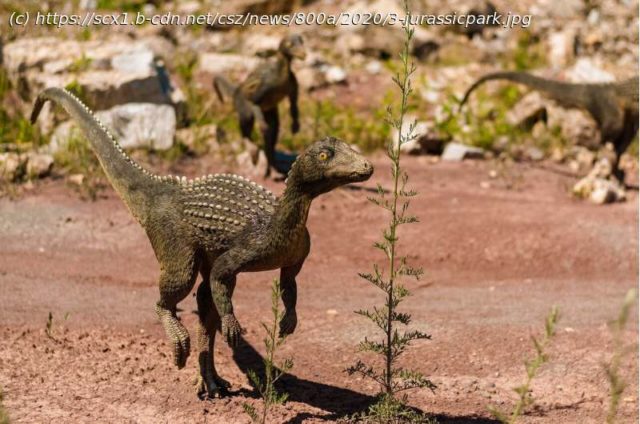« Jurassic Park » is arguably the ultimate Hollywood blockbuster. Aside from the appeal of human-chomping dinosaurs, tense action sequences and ground-breaking cinematography, its release in 1993 was a movies-meet-science milestone.
« Jurassic Park » is arguably the ultimate Hollywood blockbuster. Aside from the appeal of human-chomping dinosaurs, tense action sequences and ground-breaking cinematography, its release in 1993 was a movies-meet-science milestone.
As global audiences were soaking up the gory action, the premise of the movie—extracting DNA from fossil insects preserved in amber to resurrect dinosaurs—was given the credibility of publication by several high-profile studies on fossil amber. The authors recovered ancient DNA from amber, and even revived amber-hosted bacteria. The world seemed primed for a real-life « Jurassic Park. »
But since then, the science has taken many twists and turns. An increasing number of paleontologists are reporting evidence of DNA and proteins, which also give genetic information, in fossils. These chemical traces could provide unprecedented insights into ancient life and evolution. But such reports are the source of ongoing debate and controversy among scientists. Our recent study, published in the journal Nature Ecology and Evolution, offers new insight.
DNA yields the most detailed information, compared to other molecules, on how closely species are related. However, DNA is extremely fragile and decays rapidly after an organism dies.
That said, DNA can sometimes survive in polar climates, because the freezing temperatures slow down decay. Geologically young DNA (thousands of years old) therefore has the potential to resurrect extinct animals from the last ice age through to the recent past.
Commercial companies such as Pleistocene Park, Colossal and Revive & Restore are working on projects to bring back the wooly mammoth and passenger pigeon.
There is a long time gap between these mammoths and dinosaurs, which went extinct 66 million years ago. There is some evidence, though, that genetic material may survive in fossils even on these timescales.






